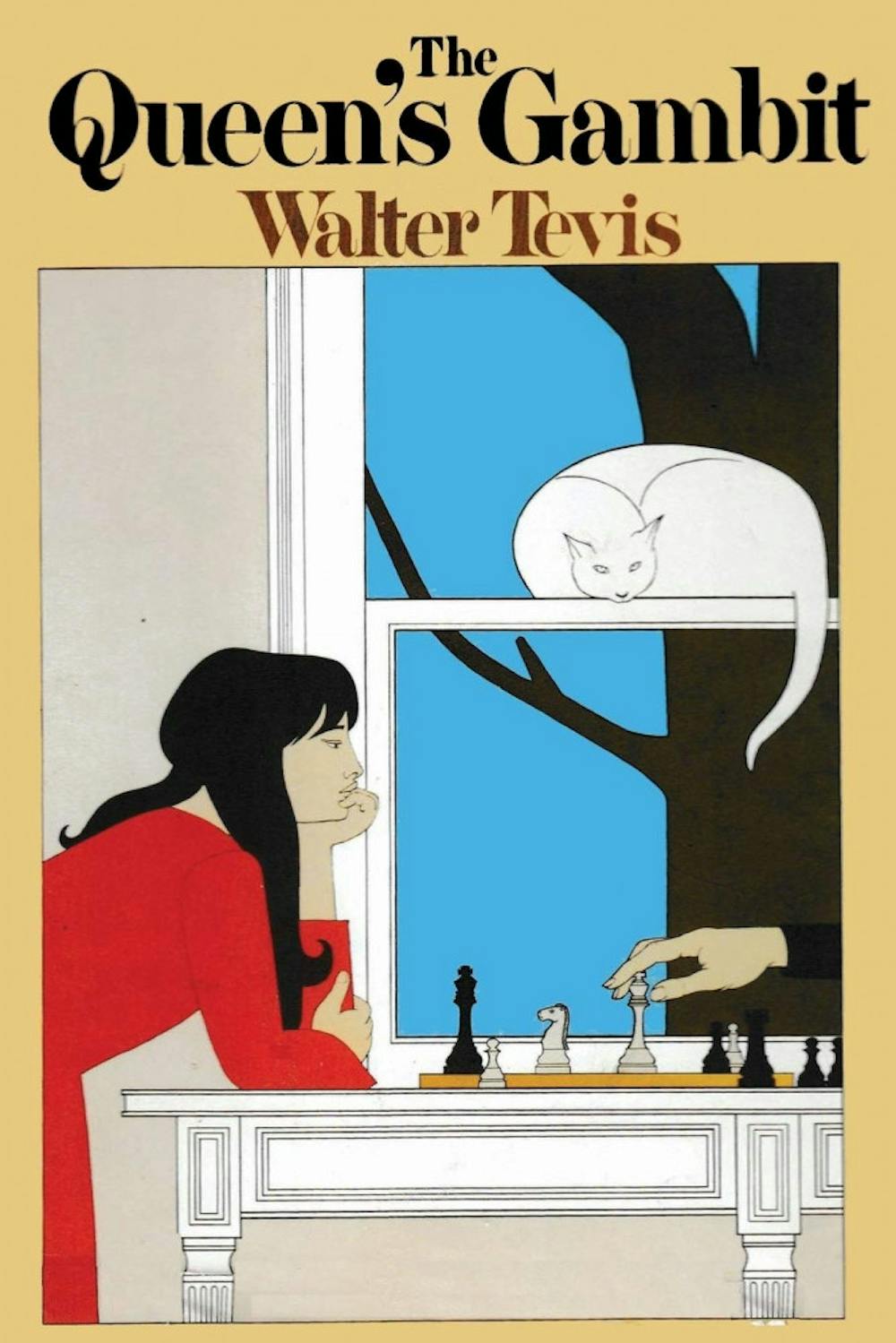The most entertaining thriller I’ve read in months is by the author Walter Tevis, an Ohio University professor who died in 1984. The novel’s title: “The Queen’s Gambit” (1983).
Perhaps you are familiar with “The Queen’s Gambit,” which was adapted into a smash-hit Netflix series of the same name last October. The show tells the story of Beth (Anya Taylor-Joy), a chess prodigy in the 1960s who dominates her mostly male opponents as she struggles with drug addiction. But while the Netflix show is largely framed as a sports drama/coming-of-age story, Tevis’ novel is an altogether darker — and even more exciting — affair than its TV adaptation. The book is a neurotic parable of obsession and commitment, a 244-page roller-coaster through the trials and joys of perfectionism.
Sometime in the late 1950s, eight-year-old Beth Harmon is sent to an orphanage school following her mother’s death in a car accident. The only extracurricular activities there are screenings of Chuck Heston biblical epics and the forced consumption of tranquilizers. Jolene, one of the few Black residents at the orphanage, becomes Beth’s first friend. The second is Mr. Shailbel, a custodian whom Beth encounters when sent down to the school’s basement to clean blackboard erasers.
Beth notices that Shailbel plays chess by himself and asks him if he can teach her the game. After some grumbling, Shaibel begins to coach Beth over the course of several months. We soon learn she’s not just a gifted player but a child prodigy who can play — and beat — multiple high schoolers simultaneously.
When Beth becomes a teenager, she’s adopted by Mrs. Wheatley, an alcoholic homemaker who eventually allows her daughter to compete in chess tournaments in exchange for a 15% “commission” on Beth’s winnings. Eventually, Beth becomes an unstoppable player, rivaled only by another prodigy, Benny Watts, and an assortment of grandmasters from the USSR.
In some ways just as interesting as Beth herself, Mrs. Wheatley injects a fair amount of humor into Tevis’ otherwise solemn narrative. “Mrs. Wheatley wiped her chin with her napkin when she finished the wine and lit a final cigarette,” Tevis writes. “‘Beth dear,’ she said, ‘there’s a tournament in Houston over the holidays… I understand it’s very easy to travel on Christmas Day, since most people are eating plum pudding or whatever.’” When Mrs. Wheatley later on asks Beth to hand her a drink, she explains that her “tranquility needs to be refurbished.”
One gets the sense that Tevis merely goes through the motions when describing Beth’s adolescence (excluding chess), but then again, Beth isn’t really trying in that department either. Largely friendless, she’s underwhelmed by a few romantic flings, has little interest in joining an exclusive high school club and doesn’t even think about going to college. In contrast to the Netflix adaptation, in which Beth progresses in her relationship with others beyond chess, Tevis’ Harmon essentially begins and ends the story as a cypher.
Tevis’ reluctance to fully scrutinize Beth as she grows older results in a narrative blunder. Jolene from the orphanage reunites with Beth when they are both adults, deciding to help Beth get into physical shape for the novel’s final tournament in Moscow. Jolene has enrolled in a master’s program now and also landed a job at a law firm. But the events of an earlier episode where Jolene molests Beth at the orphanage cannot escape a conscientious reader’s memory. As unsettling as the actual assault is, the scene’s lack of reassessment by Beth or Jolene — or even the novel’s narrator, for that matter — renders the recommencing of their friendship disconcerting.
Faults aside, “The Queen’s Gambit” is truly a prince among thrillers. Especially pulse-raising are the novel’s chess scenes, which are written with a combination of elegance, control and jargon that echoes the labyrinthian style of the recently deceased John le Carré. Take Beth’s final game in Moscow against Borgov, the seemingly unstoppable world champion.
“If [Beth] let him rook out, it would tear her apart. If he allowed her queen to move to the bishop file, his king’s protection would topple. She must not permit his bishop to check. He could not allow her to raise the rook pawn… In the whole of her mind, in the whole of her attention she saw only those embodiments of anger — knight, bishop, rook, pawn, king and queen.”
Tevis chooses short, concrete words that attack you as this heated passage rises to a fever pitch; you see here the stormy waters through which Beth’s mind navigates, yet also gain the sense of everything being in its right place. I have no idea what moving the “queen to the bishop file” actually entails, but I’m grateful that Tevis’ prose so adamantly ensures — almost grabbing me by the lapels and outright demanding — that I know how it feels.
“The Queen’s Gambit”: Walter Tevis’ fiery chess novel

Courtesy Photo
Comments



